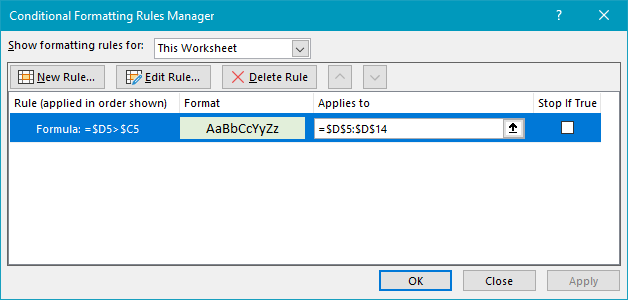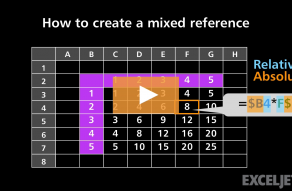Explanation
In this example, a conditional formatting rule highlights cells in the range D5:D14 when the value is greater than corresponding values in C5:C14. The formula used to create the rule is:
=$D5>$C5
The rule is applied to the entire range D5:G14. The formula uses the greater than operator (>) to evaluate each cell in D5:D14 against the corresponding cell in C5:C14. When the formula returns TRUE, the rule is triggered and the highlighting is applied.

Mixed references
The mixed references used in this formula ($D5, $C5) make this rule portable. You could use the same formula to highlight cells in B5:B14 instead of D5:D14, or even to highlight entire rows based on the same logic.

















